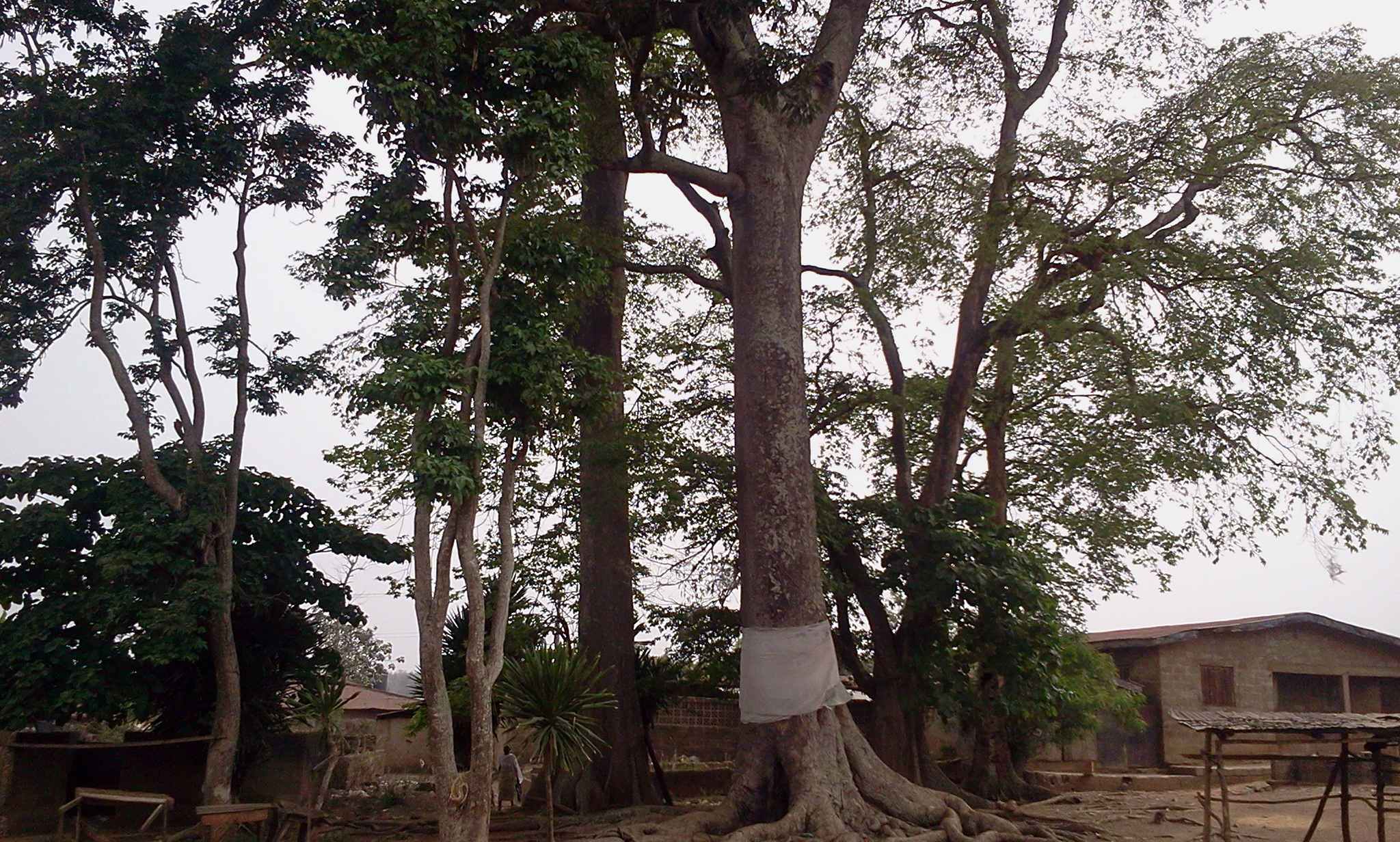News
The Ancient Sacred Oore Tree In Ileogbo

THE ANCIENT SACRED ILEOGBO OORE TREE
By Ibraheem Alli
The spiritual dictates attached to sacred places or objects varies from one community, clan, village, town or city to the other. Often, most sacred spiritual objects are instrumental to the creation, multiplication and prosperity that accompany the naming and mentioning of such place. Many cities in Yoruba land attribute their nomenclature to the dictate of divination of sacred objects, either met mysteriously or created by the first settlers of such town. Ileogbo, the Home of Abundant palm oil, the town of Oore tree was located circa 1700, checkmated by war but re-organized by a sacred tree called OORE.

The Sacred Oore Tree, located at Oke-Odo, Ileogbo Headquarter of Ayedire Local Government, Osun State.
Oore tree is as strange as finding a lion in a hole dug in the ground that harbors a rat. When you account for the mother of whom her child`s biography is shoddy, its sound unbelievable. But such is the feature of the cradle of a sacred Oore Tree located in Ileogbo.
Ileogbo, inarguably is a product of Oore Tree. The tree, because of its peculiarity, is a pointer to the seating of Ileogbo, the headquarters of Ayedire Local Government in Osun State. The tree life span is uncertain as the first settlers are younger than Oore tree.
The tree was located circa 1840 subsequent to a spiritual consultation with oracle by Kuseela, the only surviving Prince of the war between Fulani and Ileogbo in 1822. Ileogbo was checkmated by Fulanis in 1822, thus, the former site became desolated. After the clash between the troops of Alaafin and the Fulanis in Osogbo in 1840, tranquility returned to the affected Yoruba towns, Ileogbo inclusive. The development triggered Kuseela, consulted an oracle and was divined that he stops, with his entourage where ever he finds a tree tied with white cloth. It was divined that he, with his people shall organize a prosperous kingdom.
Tradition had it that the tree is manned by a male (Baba Abore) and a female (Iya Abore) appointed on the advice of the king. One of the past Iya Abore from Olukoun`s compound nicknamed the tree Alhaja Jabaru. This name is not unconnected with the female spirit the tree is said to shelter. Some traditionalists considered Oore as a strong protection against any havoc in Ileogbo. The tree does not shed its leaves under its shade.
Toying the dictate of the oracle, the founding father of the new site of Ileogbo, kuseela contacted the tree, weeded its surrounding, settled near at Akinmoyero`s compound and invited people from far and near and subsequently multiplied to about eighty two compounds with numerous suburb. The ten Ruling Houses were from Oyo Ile. Apeena from Iragberi/ Ekuro, Oloode Koto from Oyo Ile, Ologbin from Oyo, Ajele from Oyo to Ibadan to Ileogbo, Kobiowu from Tapa, Alapa from Iwo/Ede, Lemomu are Fulani from Kannike, Alape from Iragberi, Gbako from Orile Owu formerly Called Agoo Owu, Akiribawonwi from Orile Owu, Omoforilu from Ede/Ikoyi, Seriki from Offa, Aresa from Ireesa-Adu, Alaasan from Oyo
The town, Ileogbo, commands ten ruling houses to includes ; Osinkun house, Akinmoyero, Aderibigbe, Olodo house, Onijayi 1 house , Onijayi 2, Idiape house , Olasisoye house, Oloya and Alapola house. Each of these ruling houses was syndicated into five with consensus rotational system.
-

 News4 days ago
News4 days agoCapacity Building: OHIS Organizes Retreat For New Board Members
-

 News3 days ago
News3 days agoFamily Of Gruesomely Murdered Pastor Cries For Justice
-

 News2 days ago
News2 days agoJust In: Nigerian Governor Dethrones 15 Traditional Rulers, Reinstates 7
-

 News2 days ago
News2 days agoTinubu Appoints Consuls-General, Chargè D’ Affairs For 13 Countries










5 Comments